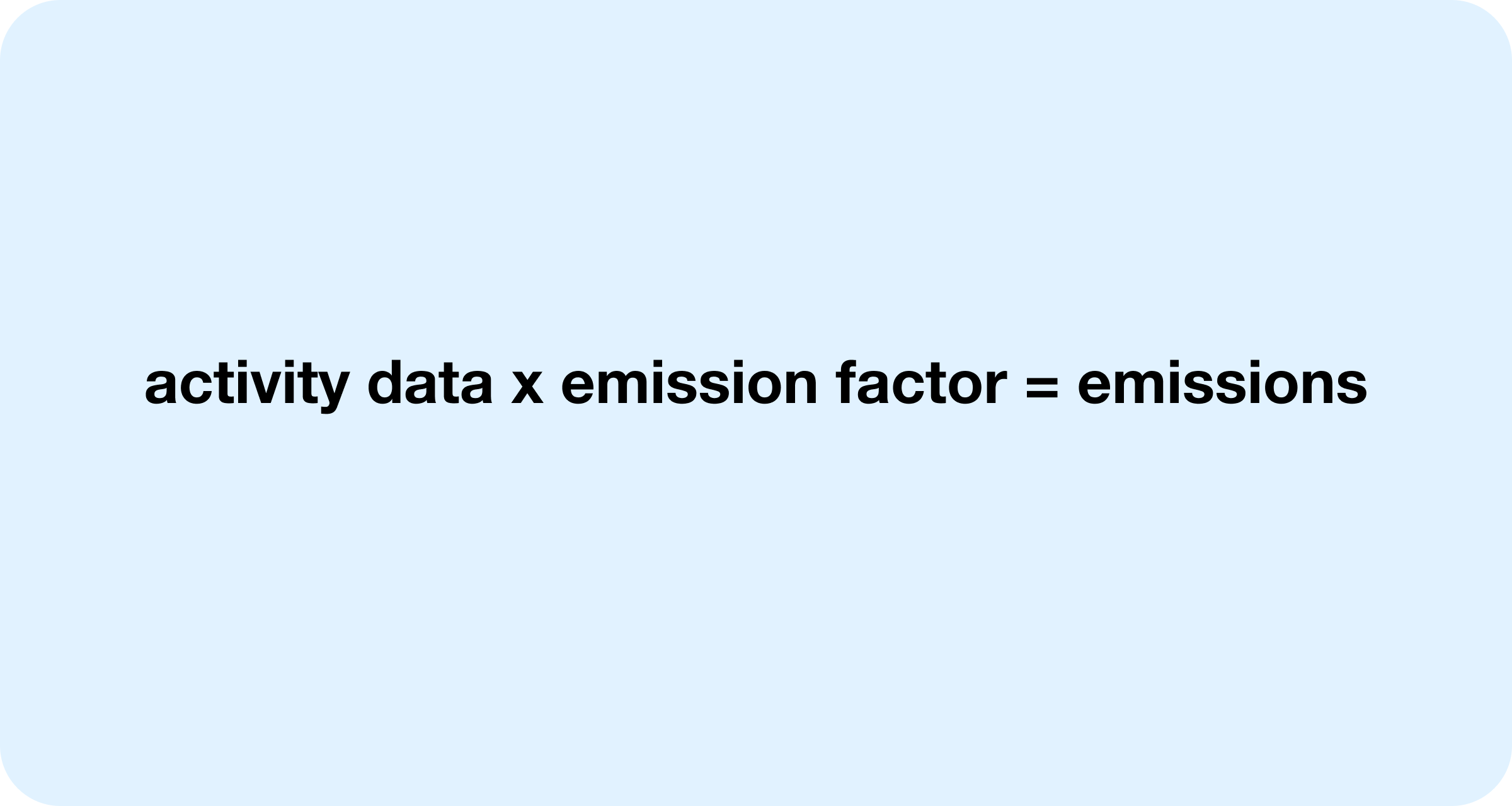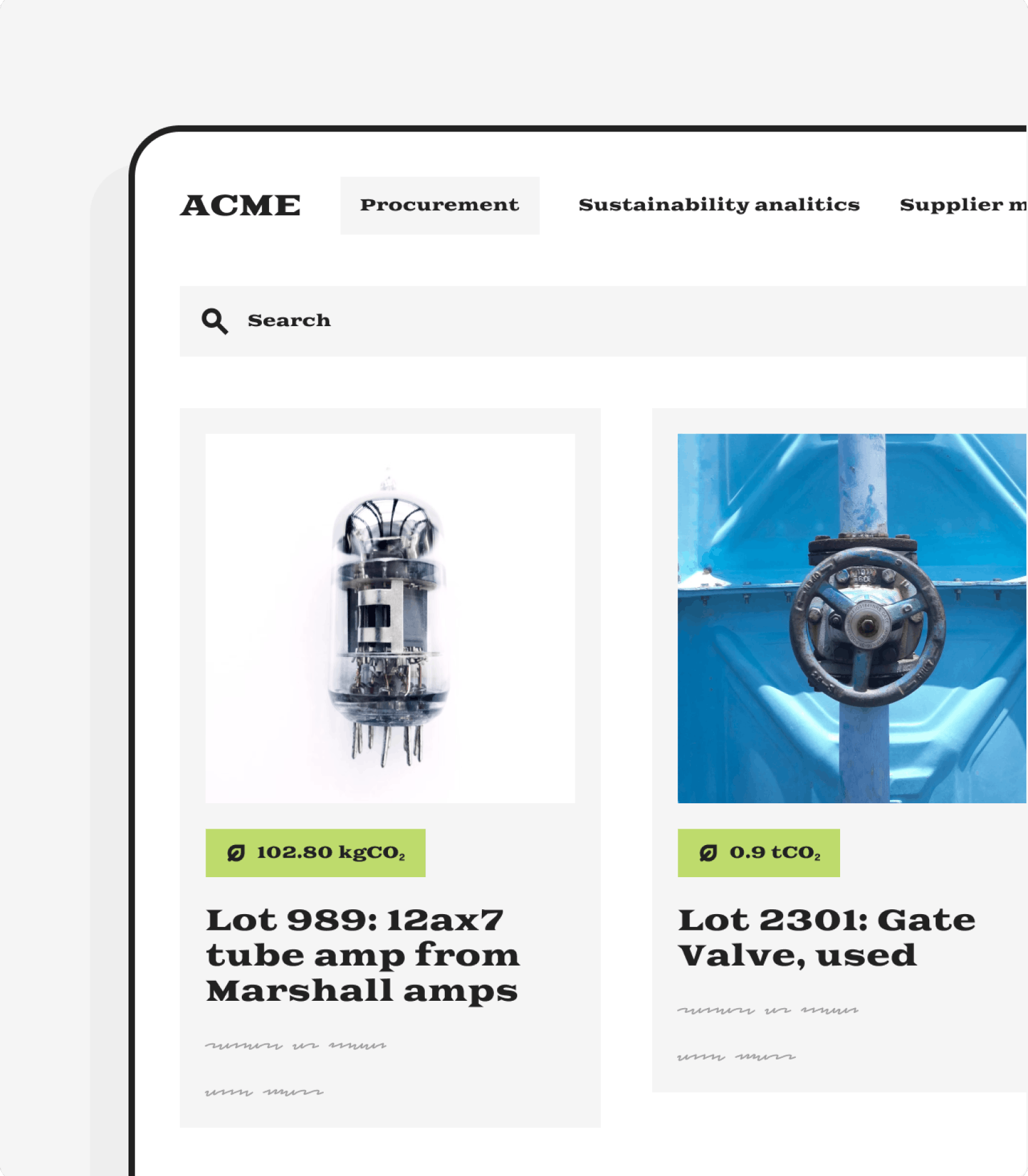

When calculating the carbon emissions for a company or a product you’ll come across the term ‘emission factor’ – but what is an emission factor? And how do you use them?
In short: emission factors are standardised values used to calculate the amount of carbon emissions that a particular activity produces.
But how does that actually work?
Well, to address a company’s environmental impact we first need to understand what that impact is – and that means determining the amount of carbon emissions that occur as a result of business activities.
In some cases, you may have source-specific primary data from your team or suppliers about carbon emissions from activities, if they are monitoring those emissions themselves. But, much of the time this isn’t possible.
That’s where emission factors come into play – enabling us to convert a unit of activity into an estimated amount of carbon emissions, expressed in weight (kg or tonne).
So, calculating emissions looks like:
Activity data x emission factor = GHG emissions
Activity in this context can mean the product/service/materials category either by number, amount (eg. in kg), or monetary value.
There are many different databases for emission factors, which typically focus on specific geographies, industries, or types of activities.
In terms of which you decide to use, generally speaking the closer you can get to your actual business activity the better, because this will give a more accurate picture of emissions – so choosing a database which is specific to the location you operate in or which covers individual materials you use for your products is better than opting for a more generic database.
A few of the emission factor databases out there are:
- EXIOBASE is a detailed database with global coverage of emission factors for calculating the emissions for different materials, resources, and products within your business activities.
- The US Environmental Protection Agency hosts a broad dataset of emission factors, the Supply Chain Emission Factors for US Industries and Commodities
- The UK government publishes emissions factors annually for a range of business activities including transportation types, fuel use, and more – specific to UK based companies.

Let’s take a look at an example calculation of emissions using an emission factor, to put this into context.
Say your company sells physical products and wants to calculate the carbon emissions resulting from the cardboard boxes used as packaging for those products when delivering to the end customer’s address, for the previous year.
The company is based in the US, so you might decide that the US Environmental Protection Agency’s emission factors are most appropriate for your case.
For cardboard boxes, the US EPA emission factor is 0.511 kgCO₂e per $1 of cardboard box.
So, using a spend-based emissions methodology, if you determined that the company had spent $10,000 on cardboard boxes for the past year of deliveries, then the following calculation would be made:
Activity/spend data x emission factor = GHG emissions
10,000 x 0.511 = 5,110 kgCO₂e
Skip this step with automated emissions calculations
As you can probably tell from this explanation, if you have a lot of different activities and steps within your business operations it can be complex and time consuming to calculate the carbon emissions resulting from your product or service.
But, it doesn’t need to be.
An API for emissions calculations (like Lune’s) does the hard work for you – taking your activity data and automatically calculating the emissions with a relevant emission factor. Plus, you can then make those emissions automatically visible within your product.

If you use an API like this, you just need to make sure you’re comfortable that the method and emission factors that are used within the API are appropriate for your company (industry, location, materials etc) and will give an accurate estimate of emissions – the API provider should be able to provide you with this information.
At Lune, for example, we follow the Greenhouse Gas Protocol’s methodology for calculating emissions (as well as aligning with industry specific methodologies where appropriate e.g. the GLEC framework for logistics emissions calculations). We use a number of emission factor databases, such as EXIOBASE, US EPA, BEIS, Ecoinvent and more, and are constantly adding new sources to increase coverage and granularity of our calculations.
Today we have 1,000s of spend-based emissions factors and 10,000s of activity-based emissions factors.
And, we’re always happy to talk through our methodology with any company that’s interested in our API for emissions calculations – if that’s you, just get in touch.
Readers also liked
Readers also liked

Subscribe for emissions intelligence insights
Get the latest updates in the world of carbon tracking, accounting, reporting, and offsetting direct to your inbox.


